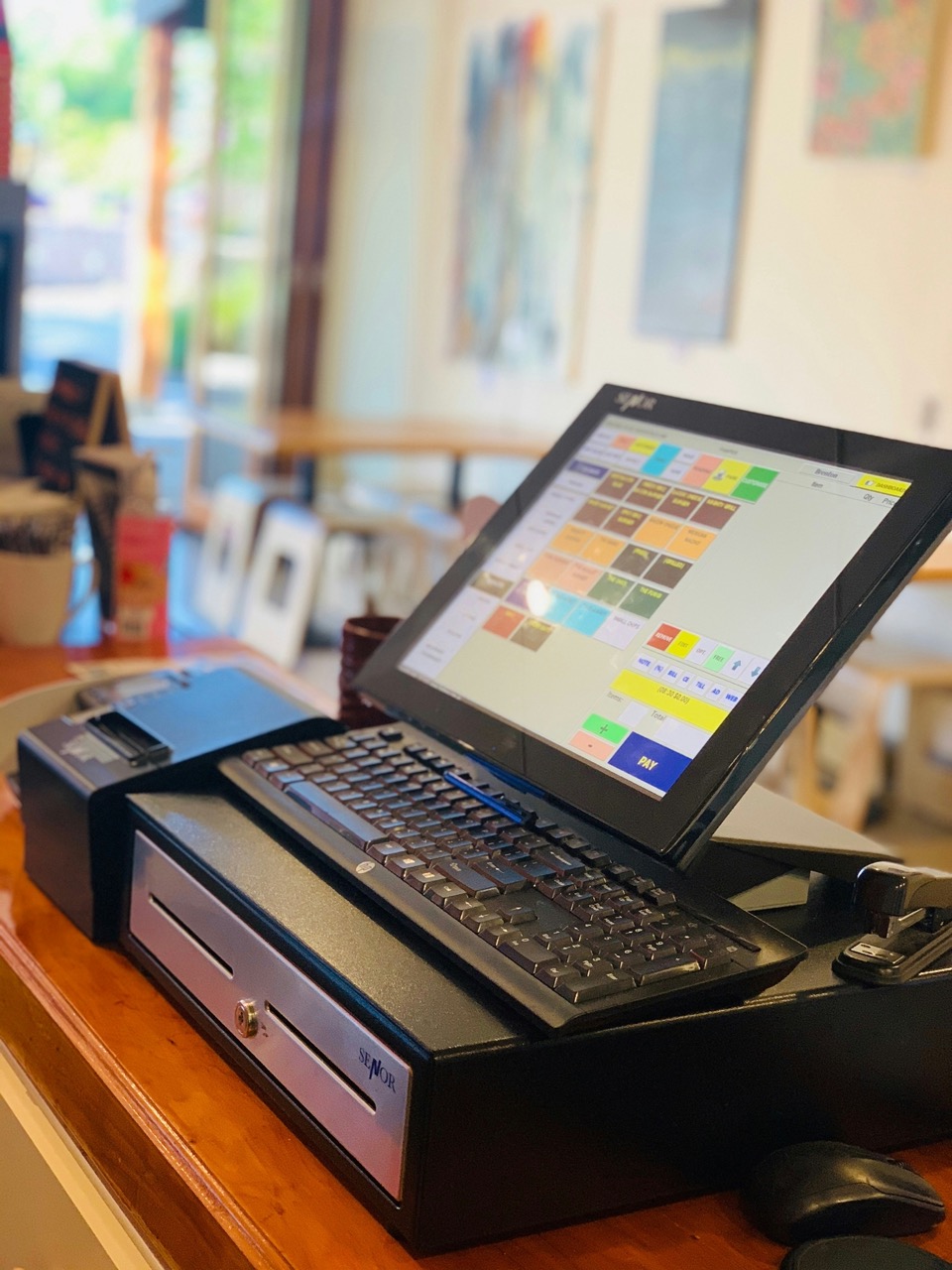Currently, the restaurant industry is confronted by a multitude of challenges. For the smooth running of the business to continue, the application of software becomes inevitable. Optimizing Restaurant Management Software is not only a technological phenomenon, but also essential in order to attain maximum performance, improve customers’ service quality and significantly reduce costs. Also, you can take a look on the Celadonsoft experience about restaurant management app: https://celadonsoft.com/solutions/restaurant-management-software-development-company

The role played by software in maintaining the smooth operation of the restaurant
Modern restaurant management software covers a wide range of features, from inventory control to customer engagement. All processes are presented by the software to be integrated in one environment, thus helping to minimize mistakes and accelerate processes. The most crucial aspects of using the software are:
- Faster order processing: Integration of POS systems with kitchen displays helps to decrease waiting time for customers and minimize errors during order transfer to the kitchen.
- Inventory management: Solutions of software help to manage and track inventory, which prevents shortages of products and also leads to improved financial performance.
- Reporting and analysis: Real-time financial analytics help restaurant owners to see all the revenues and costs, and also to make the menus optimized based on demand from customers.
Optimizing Restaurant Management Software benefits
- Enhanced efficiency: Mechanizing the time-consuming operations frees up personnel to devote attention to higher-priority tasks such as customer care and menu development. For example, mechanizing the seating procedure can reduce waiting time significantly.
- Reduced costs: Effective stock management and selling analysis avoid costly purchases, which reduces start-up costs directly.
- Improved customer service: The feedback system and CRM allow customers’ wishes to be taken into account and react promptly to their needs, which in turn increases loyalty and the number of regular visitors.
The Optimizing Restaurant Management Software is not only an act of modernization, but the real recipe for success in business in a competitive age. Knowing how technology can streamline restaurant business will enable entrepreneurs to make better decisions and adapt to changing market demands. Effective optimization is the key to gaining competitiveness and economic resilience by the restaurant business.
Key building blocks of successful restaurant software
In the modern restaurant business period, the management method becomes increasingly technological. Efficient software (SW) is the key contributor to ensuring the proper operation in the premises, and it’s fine-tuning can markedly increase profitability and the quality of service. Consider carefully the key building blocks to develop.
Order and service management
One of the most important steps in Optimizing Restaurant Management Software is system integration, etc., consolidating systems such as sales points (POS) and kitchen displays. This allows for:
- Accelerate order processing: Incoming orders to the kitchen in real time reduce chances for errors and increase cooking speed.
- Streamline customer service: Usage of mobile applications for orders allows waiters to focus on serving and bettering the quality of work with clients.
Inventory and warehouse accounting
No company can do without effective inventory accounting. Implementation of advanced accounting systems will help:
- Accurately track available stocks: This avoids product and staff shortages in unnecessary quantities, thus saving money.
- Simplify procurement processes: With analytical software, you can establish demand for certain products and reduce losses on spoiled products.
Financial accounting and analysis
Monitoring financial flows in real time is the basis for efficient restaurant management. Main advantages:
- Revenues and expenses management: The system allows you to monitor cash flows and react to changes in a timely manner.
- Sales analysis: Being aware of the most popular dishes and their selling time helps in optimizing the menu, which can lead to more profits.
Staff management
Celadonsoft: The success of a restaurant also depends not only on equipment, but also on the staff. That’s why it’s also worth taking into account such factors as:
- Time tracking: The software can help in better registering workers’ working hours, which leads to more accurate pay.
- Scheduling automation: Scheduling tasks appropriately averts peak-hour deficiencies and increases overall effectiveness.
These basic requirements do not only raise the restaurant management process to a greater level, but also contribute significantly in offering an improved level of comfort for workers and visitors alike. Optimum utilization of such factors is a move towards efficient and competitive business.
Integration and scalability tips
Celadonsoft: Good restaurant software is not a set of functions, but one ecosystem that should work as a single mechanism. Integration of different parts of the system and scalability are becoming success factors for restaurants that are trying to work well and respond to changes in the market environment in a timely manner. Consider a number of factors that will contribute to this process.
Assuring module compatibility
- Selecting the modular software: In selecting the software, opt for modular software that can be enhanced with more functions as and when required. This will provide flexibility and allow ease in changing the system to accommodate current business needs.
- API and third party integration: Utilize open APIs for connectivity with third-party applications. This becomes extremely important during integration with delivery systems, financial and inventory systems. Flexibility of integration allows an individual to reduce time spent on training staff and decreasing errors.
- Common database: Construction of a single database for all the elements of software, like order management, inventory, and staff. This ensures that all the systems in communication are supplied with the most suitable information in real time.

Software flexibility to adapt to changes
- System scalability: Your restaurant can grow through opening new branches or expanding one of the current ones. Your software should be easily adaptable so that it can support new points of sale and increased number of users.
- Interface adaptation: The interface should be easily understandable and adjustable according to the work details of different restaurants. This will not only improve the user experience, but also reduce the learning time for new software.
- Support for multifunctionality: The fact that the system can be run on various devices (tablets, fixed terminals and mobile phones) is a relief for restaurants with flexible organizational structure. The staff should be able to access the system from anywhere – whether cash room or kitchen.
Finally, integration and scalability are not merely technical requirements but essential characteristics having direct effects on the operational performance of the restaurant business. These issues being treated in a context relevant to your business will prove to ensure sustainability in competitiveness along with higher customer service quality.
Reliability and security
Celadonsoft: As digital technology advances for restaurant business, software reliability and security take the lead. Customer faith in your restaurant heavily depends on how their data is secured. Below are some key considerations to make the best of software:
Client data protection
- Data encryption: The customer data, such as credit card numbers and personal data, must be encrypted with the knowledge that it is now required at the current security level. SSL and other forms of encryption provide adequate security at the data transmission level.
- Data storage: Use secure servers for storing data, and update the security systems against leaks periodically. Use backup for critical data to minimize information loss risks.
Financial security
- Transaction monitoring: Use systems for monitoring all the financial transactions in real time. This will warn instantly against fraudulent transactions and prevent fraud.
- Role-based access: Restricting access to financial information at the employee level. Depending on your role, provide only the necessary access that will reduce errors and abuse.
Ensuring the system runs continuously
- Backup and recovery: Regular backup of data will avoid losses due to technical breakdowns. Ensure data recovery is simple and transparent.
- Monitoring systems: Place monitoring systems which will allow you to view activity in real-time and notify administrators of possible malfunction or disruptions. This will allow you to deal with any issue in a timely manner.
Finally, it needs to be highlighted that investing in software security and reliability is not just a need, but also a duty to customers. The higher your data security and system robustness, the lower your worries regarding possible collapse. Streamlining your restaurant software in this aspect is not merely a step in the direction of efficiency, but it is a reflection of how prepared you are to give your customers the top-notch service while keeping them protected.

Conclusion: Steps towards successful optimization
Optimizing Restaurant Management Software is not just a step towards efficiency, but a strategic step that can transform the business process entirely. To achieve success in such a direction, several important steps must be undertaken:
1. Analysis of the current state of software
- Audit current systems. Determine which functions are working correctly and which are causing problems.
- Identify bottlenecks in procedures. For example, the rate at which orders are fulfilled or how often stock mistakes are done.
2. Improvement planning
- Create a plan on the specifics of your restaurant. Bear in mind the menu aspects, size, and structure of staff, and types of technologies utilized.
- Prioritize. Start with those aspects which have the highest contribution to the customer experience — e.g., handling orders and managing services.
3. Introduction of new solutions
- Make changes incrementally, starting with core features, such as integration of POS systems with kitchen displays. This is the most obvious step that will improve speed of service immediately.
- Automate personnel management and inventory processes. Not only will this improve production processes, but it will also reduce the risk of human errors.
4. Staff training
- Instruct staff training on utilizing the new software. Make sure everyone in the team understands how the system works and how to maximize the benefits of the tools available.
- Create brief guides and resources that you can refer back to when issues or questions crop up.
5. Continuous monitoring of performance
- Set criteria to evaluate the success of the implemented changes. This can be an analysis of the increase in service speed, a reduction in costs or an increase in the number of positive customer feedback.
- Regularly collect feedback from staff and customers to identify new opportunities for optimization.



Leave a Reply
You must be logged in to post a comment.